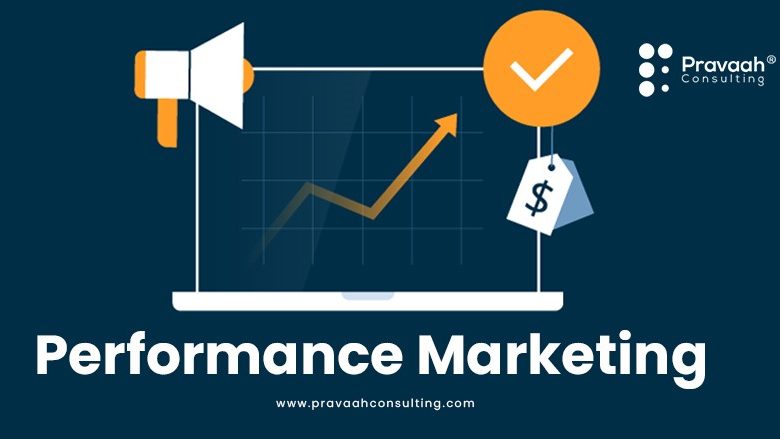What is Performance Marketing and It’s Importance?

With the advent of the internet, came an irrevocable transformation in people’s browsing and purchasing habits. Thus it stands to reason that there came about a change in the way businesses market and sell their products. Marketers can now collect campaign data in real-time thanks to the digital boom. While evaluating the marketing touchpoints of a customer’s purchase journey was once practically impossible, data transparency today allows marketers to improve the performance of their campaigns through marketing attribution.
Then came the COVID-19 pandemic which took a toll on a number of industries. While large businesses can spend millions of dollars on branding, small businesses must focus on the bottom line in order to remain profitable. Thus, In today’s digital world, incorporating performance marketing into your overall advertising approach is a sensible choice.
What is performance marketing?
It is digital marketing or advertising strategy in which businesses only pay the affiliates, advertisers, or performance media marketing companies when a specific, agreed-upon result is achieved rather than a fixed charge. This could be a new lead, a sale, a click, a subscription, a download or any other outcome agreed upon between the advertiser and the business.
Performance Marketing Channels
This form of marketing focuses on constant campaign optimization in order to increase conversions, which necessitates testing and making data-driven decisions. The marketers ensure their advertisements reach their intended audience. If you want to attract substantial views and clicks, your ad styles and graphics must make a strong statement. To achieve true business performance, you must align your marketing objectives with the appropriate channels. Here is a list of such channels:
1. SOCIAL MEDIA ADVERTISING
Using social media ads is the most effective way to reach a larger audience. You can target a specific category of users with your social media ads. You can create an ad campaign based on your company’s goals. The brilliant thing about paid social media advertising is that you have access to marketing performance data. You can see the relationship between your investment and the results, and you can fine-tune your performance marketing campaign to improve performance.
2. Native Advertising/Sponsored Content
Sponsored content is also known as native advertising. Native advertising is the concept of generating ads that are so well integrated into the page content, design, and platform behavior that the viewer believes the ad belongs there. This type of material must look, sound, and feel like it belongs on the site or platform where it is published.
3. Search Engine Marketing
This performance marketing channel combines search engine optimization (SEO) and paid search. The most common paid search model, pay-per-click marketing, places your ad above the fold to increase the visibility of your search results. Almost every online experience begins with a search engine, thus placing your ads for enhancing your online visibility.
4. AFFILIATE MARKETING
An affiliate or publisher is a person which promotes another company’s product or service. The affiliate promotes these items or services by linking to them or displaying advertisements for them on their website. The person or company is compensated for directing new leads or customers to a company’s website.
5. DISPLAY ADS
All sorts of visual adverts that appear on websites that your audience visits are known as display ads. These ads often include a visual element, an ad copy, and a link to a landing page where users can become leads or consumers. By using internet advertising networks like Google Ads, you may target your ads to people whose interests, demographics, or online activity match those of your target audience. Here, you only pay when someone clicks on your ad, converts on your landing page or takes another predetermined action.
Benefits of Performance Marketing
Easy to Budget: Since performance marketing management sets targets and an ideal cost per action at the start of the planning process, performance marketing initiatives are simple to budget for.
Strategy optimized to goals: Since goals are emphasized throughout performance campaign efforts, therefore Ads are optimized based on the campaign’s goal, whether that goal is viewable impressions, clicks, leads, or something else.
Easy tracking of performance: Performance marketing strategies are set up with the sole objective of tracking and measuring performance. Thus it becomes easy to track the performance of campaigns and subsequently change them to generate better results with the help of numerous data analytics tools built specifically for performance marketers.
Less Risky: Performance Marketers have complete visibility of their performance campaigns at all stages, allowing them to optimize and decrease risk as needed.
Real-Time Tracking: Performance Marketing makes it simple to track and measure your results. Knowing how each creative performs with a target audience is a huge asset for marketers, allowing them to adapt and respond to feedback throughout the campaign. This makes it simple and quick to maintain track of your return on investment (ROI) at any given time.
Conclusion
There are numerous advantages and benefits of performance marketing but it is also important to mention that it can do even better with a synergy of other digital marketing tactics. What we mean is that performance campaigns are a part of a comprehensive whole that is digital marketing, It is more impactful when combined with other elements of digital marketing and technology. Praavah Consulting is a performance marketing digital agency, that combines the different elements of marketing and technological expertise to help you reach your goals.




